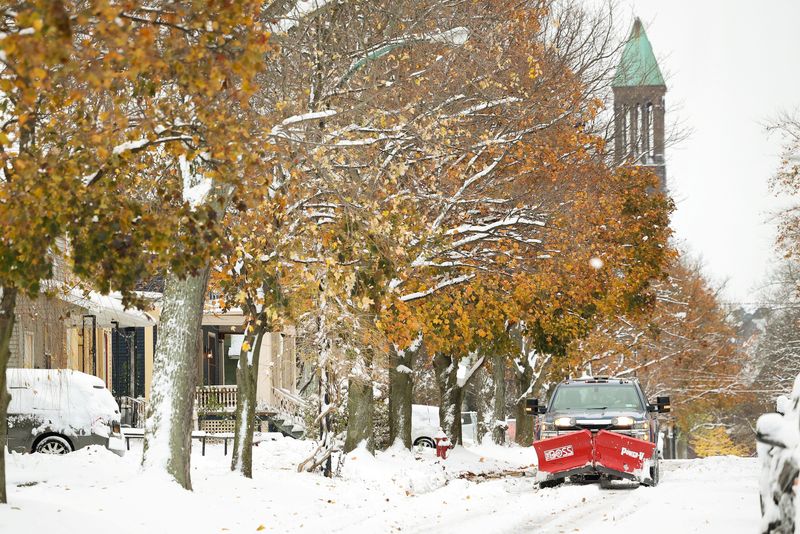The flood in New York, what will happen next
2022.11.18 12:16
[ad_1]

The flood in New York, what will happen next
Budrigannews.com – Parts of western New York woke up to nearly 2 feet (0.6 meters) of “lake effect” snow on Friday, about half of the total buildup that forecasters say squalls blown from Lake Erie could dump into Buffalo and other cities this weekend.
Squalls could last until Sunday, with heavy snowfall sporadically occurring along narrow strips, with 4-1/2 feet (1.4 meters) of snow in some places.
By Friday, the accumulated deep snow had forced the closure of a segment of New York’s Thru-Way that had knocked out power to some customers and caused flight cancellations at Buffalo Niagara International Airport.
The prospect of up to 4-1/2 feet of powder on the ground by Sunday prompted the National Football League to move the Cleveland Browns and Buffalo Bills home games to Detroit.
As of early Friday, road closures remained in effect in much of central Erie County.
Authorities have at least temporarily lifted road restrictions and instead issued travel advisories in the north and south of the county, including Buffalo, where snow feet have fallen. Buffalo is the second most populous city in New York State with some 278,000 residents
As of Friday morning, about 6500 customers were without power in the Buffalo area, according to Poweroutage.us
“What we’re talking about is a big storm,” New York Governor Kathy Hochul said a day after declaring a state of emergency in the Buffalo area.
The Buffalo Public School District, the state’s second-largest service 32,000 students, canceled all classes and closed offices on Friday.
Rich Otto, a meteorologist at the Storm Prediction Center in College Park, Maryland, said temperatures in the region developed as much as 10 to 20 degrees Fahrenheit above the average for this time of year.
The winter season will not officially begin, but for another 5 weeks, the National Weather Service posted winter storm warnings, winter weather forecasts and snow warnings of lake impacts across all areas of western New York downwind of the Great Lakes.
The Bureau of Meteorology said maximum accumulations in or near Buffalo, located on the eastern edge of Lake Erie, could exceed 4 feet (1.2 meters), with 1 to 2 feet (0.3 to 0.6 meters) of snow expected in many locations by Sunday.
According to the Bureau of Meteorology, it’s not uncommon in western New York in January, when the relatively warm waters of the Great Lakes can mix with the frigid air of the upper atmosphere falling from the Arctic.
The storm was not expected to break weather records, but meteorologist Liz Jurkowski of the Weather Service said it could rank in the top 20 snowfalls in the past 5 years.
In 2014-11, more than 5 feet (1.5 m) of powder snow was deposited east of Buffalo, but only a few inches of snow fell a few miles north, according to the Bureau of Meteorology, indicating the highly localized nature of the phenomenon.
[ad_2]








